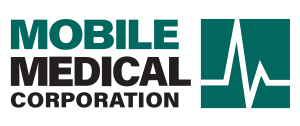When the stakes are as high as the machinery is heavy, ensuring workplace safety is not just a priority — it's a necessity. The Occupational Safety and Health Administration (OSHA) plays a big role in upholding safety standards and protecting workers from potential hazards.
But what is an OSHA recordable, and how does it impact occupational industries?
For high-risk industries, understanding what constitutes an OSHA recordable incident is essential for maintaining compliance while fostering a safer work environment. Join us as we explore why it matters for business owners and employees alike!
What is an OSHA Recordable Incident?
An OSHA recordable incident refers to any work-related injury or illness that meets specific criteria set by OSHA, requiring it to be recorded in the employer's OSHA 300 Log. This log is an important tool for tracking workplace safety and identifying areas that may need improvement.
The incidents that qualify as OSHA recordable are those that go beyond basic first aid and have a significant impact on the employee's health or ability to work.
OSHA Criteria for Recordability
OSHA has established clear criteria to determine which incidents are recordable. An incident is considered OSHA recordable if it results in:
- Death: Any fatality resulting from a work-related incident must be recorded.
- Loss of Consciousness: If an employee loses consciousness due to a work-related event, it is recordable.
- Days Away from Work: Incidents that cause an employee to miss one or more days of work are recordable.
- Restricted Work or Transfer to Another Job: If an employee is unable to perform their regular duties and is either restricted or transferred to another job, the incident must be recorded.
- Medical Treatment Beyond First Aid: Any treatment that goes beyond basic first aid — such that it requires stitches, prescription medication, or surgery — qualifies as recordable.
- Diagnosis of a Significant Injury or Illness: Conditions like cancer, chronic irreversible diseases, or fractured bones are automatically recordable when diagnosed.
Examples of OSHA Recordable Incidents
OSHA incidents will vary by industry, but generally, a few common recordable types include:
- Workplace Injuries: What is an OSHA recordable injury? These can range from cuts requiring stitches to fractures. For instance, if an employee cuts their hand on machinery and requires stitches, this is an OSHA recordable.
- Illnesses: Work-related illnesses such as respiratory conditions from inhaling toxic substances, skin diseases from chemical exposure, or hearing loss from prolonged exposure to loud noises are also recordable.
- Repetitive Strain Injuries: Conditions like carpal tunnel syndrome (which develops over time due to repetitive motions) are considered recordable if they meet the criteria for medical treatment or restricted work.
By maintaining accurate records of these incidents, employers not only comply with OSHA regulations but also create a safer work environment. A proactive approach helps in identifying potential hazards and implementing measures to prevent future incidents, ultimately contributing to the well-being of all employees.
How Timing and Location Affect Recordability

Incidents that occur during an employee's work hours or while they are performing work-related tasks are typically considered recordable. However, if an incident occurs off-site but is still work-related (such as during a business trip or at a client location), it may still qualify as OSHA recordable.
The timing of the incident also matters; for instance, if symptoms of a work-related illness appear after the employee has left the workplace, it may still be recordable if the exposure occurred during work hours.
Importance of Timely Reporting by Employers
Accurate, timely reporting of OSHA recordable incidents is vital for several reasons.
First, it ensures compliance with OSHA regulations, helping employers avoid potential fines and legal issues. Second, it allows for the identification of workplace hazards, enabling employers to implement corrective measures to prevent future incidents. Timely reporting also contributes to a culture of safety, demonstrating to employees that their well-being is a priority.
Employers should maintain detailed records of all incidents, including the nature of the injury or illness, the circumstances surrounding the incident, and any medical treatment provided. This documentation is essential for both regulatory compliance and the continuous improvement of workplace safety practices.
What Incidents Don't Qualify as OSHA Recordables?
Now that we've discussed what an OSHA recordable is, it's equally important to understand when an incident does not qualify. The distinction helps employers maintain accurate records and focus on genuine workplace safety issues.
First Aid Treatment Only
Incidents requiring only first aid treatment are not OSHA recordable. First aid includes basic care such as using a bandage or applying a cold compress, without involving prescription medication or advanced procedures.
On-site medical clinics, like those provided by MMC, are equipped to efficiently deliver such first aid services. These clinics are crucial for construction sites, offering comprehensive first aid supplies and reducing the need for off-site medical care.
By having a workplace first aid station, businesses can decrease costs, improve safety, and enhance employee well-being.
Incidents Occurring Outside of Work-Related Activities
This includes injuries or illnesses that happen during personal time, such as commuting to and from work, or during non-work-related events.
If an employee sprains their ankle while playing a sport on the weekend, this incident is not recordable — even if it affects their ability to work. The key factor here is whether the incident is directly related to the employee's job duties or work environment.
Personal Medical Conditions Unrelated to Work
Personal medical conditions that are unrelated to work activities or the work environment do not qualify — specifically chronic conditions or illnesses that an employee may have developed outside of work.
Let's say you have an employee who has a pre-existing condition like diabetes or hypertension that requires medical attention. In this case, it is not recordable unless it is directly aggravated by work-related activities. Similarly, if an employee experiences a non-work-related medical emergency (i.e. a heart attack) while at work, it is not considered OSHA recordable unless work conditions contributed to the event.
OSHA Reportable Vs. Recordable
What is an OSHA recordable when compared to a reportable? While both terms relate to workplace injuries and illnesses, they serve different purposes and have distinct criteria.
An OSHA reportable incident refers to severe work-related injuries or illnesses that must be reported directly to OSHA within a specific timeframe. This includes any work-related fatality or in-patient hospitalization.
Employers are required to report fatalities within 8 hours and other severe incidents within 24 hours. The purpose of reporting these incidents is to alert OSHA to significant safety issues that may require immediate investigation or intervention.
Key Differences Between Recordable and Reportable Incidents
The primary difference between recordable and reportable incidents lies in the severity and immediacy of the response required.
Recordable incidents encompass a broader range of work-related injuries and illnesses that must be documented in the OSHA 300 Log, such as those requiring medical treatment beyond first aid or resulting in days away from work. In contrast, reportable incidents are more severe and require direct notification to OSHA due to their potential impact on worker safety and the need for prompt action.
Situations That Are Reportable but Not Recordable
There are certain instances where an incident may be reportable but not recordable, and vice versa. For example, a work-related fatality is both reportable and recordable, as it requires immediate notification to OSHA and documentation in the OSHA 300 Log. However, an incident resulting in an employee's hospitalization for observation (without treatment) may be reportable only if it does not meet the criteria for medical treatment beyond first aid.
A minor injury that requires medical treatment beyond first aid — such as stitches for a cut — is recordable but not reportable, as it does not meet the threshold for immediate OSHA notification. Similarly, a repetitive strain injury is recordable due to the need for medical treatment but is not reportable unless it results in hospitalization or another severe outcome.
Accurate Record-Keeping and Reporting

Employers are tasked with maintaining OSHA logs (particularly the OSHA 300 Log) to document work-related injuries and illnesses. These logs serve as a detailed record of workplace incidents, offering insights for identifying trends, evaluating risks, and implementing preventive strategies.
Incorporating electronic medical records (EMRs) through on-site medical services can greatly enhance the accuracy and efficiency of this process. With EMRs, businesses will effectively reduce injuries, minimize worker's compensation claims, and lower the number of OSHA recordable incidents.
MMC employs the Cority EHS software suite to manage electronic health records securely, ensuring compliance with regulations. This software facilitates comprehensive reporting through data analysis and trend tracking, ensuring that all OSHA logs are precise and current.
What's more, the use of advanced EMR systems ensures that records are transparent and accessible to both employees and OSHA representatives, which is essential for compliance.
Legal and Safety Implications
Legally, failure to maintain proper records can result in fines and penalties from OSHA, as well as potential legal action if an incident is not properly documented.
From a safety perspective, accurate records help identify trends and potential hazards. This not only protects employees but also enhances the overall safety culture within your organization.
Moreover, accurate records can be instrumental in defending against false claims or disputes regarding workplace incidents.
Tips for Ensuring Compliance with OSHA Standards
To guarantee compliance with OSHA standards, employers must adopt several best practices:
- Regular Training: Provide ongoing training for employees and management on OSHA record-keeping requirements and the importance of accurate reporting.
- Designate a Responsible Person: Assign a specific individual or team to oversee the maintenance of OSHA logs and ensure that all incidents are recorded promptly.
- Conduct Regular Audits: Periodically review OSHA logs and record-keeping practices to identify any areas for improvement.
- Utilize Technology: Implement digital record-keeping systems to streamline the process, reduce errors, and make certain that all records are easily accessible.
- Encourage Reporting: Support an environment where employees feel comfortable reporting incidents without fear of retaliation.
Obtain OSHA Compliance with MobMed
Prioritizing safety and compliance is not just a legal obligation — it's a commitment to the well-being of your entire workforce. At MobMed, our goal is to help you reduce OSHA recordable incidents while enhancing workplace safety.
If you're uncertain about your current practices or need to strengthen your safety protocols, MobMed is here to assist! We offer comprehensive on-site health and medical services to meet your workplace safety needs. Our specialized training programs are designed to ensure OSHA compliance, equipping your team to effectively manage any potential incidents on-site.
Get in touch with a MobMed representative today to get started!



